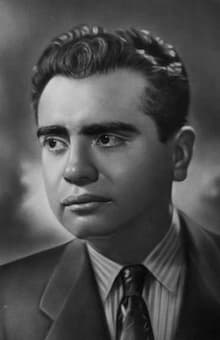Joyful tunes by Blas Galindo, Juan Pablo Contreras, Jose Pablo Moncayo and Aleksey Igudesman
Mexico has a vibrant musical history full of different musical styles and influences. Mariachi music is one of them. Mariachi refers to both the genre of the music and the group of musicians who perform the music. The mariachi musicians play music associated with festivals and celebratory events. There are two theories about where the name mariachi comes from: One is that the word comes from a Coca Indian word which refers to the platform on which the orchestra performed; the other theory suggests the word is derived from the French word “mariage,” meaning wedding. Indeed, the mariachi ensemble often plays at weddings. Mariachi music is usually festive and lighthearted; performers occasionally yell and laugh with their full, operatic voice to increase the lively atmosphere. It blends European sounds with music of African and indigenous people.
This article will share how composers incorporate and rearrange these festival, joyful tunes into their work.
Blas Galindo: Sones de Mariachi

Blas Galindo
Blas Galindo (1910-1993) was a Mexican composer. He was a student of Aaron Copland and Carlos Chávez. He was a professor and a director of the National Conservatory of Music in Mexico. He was well-known in Mexico and worldwide, and he was one of the adjudicators at the fourth Chopin piano competition in Warsaw in 1949. He was active as a musician throughout his life, and he remained active in composing when he retired from teaching in 1965. Sones de Mariachi for large orchestra (1941) was a rework from Galindo’s Mariachi Sone for small orchestra. This work is based on three pieces, including Son de la Negra, The Vulture, and The Four Real.
Juan Pablo Contreras: Mariachitlán

Juan Pablo Contreras © juanpablocontreras.com
Juan Pablo Contreras (b. 1987) is one of the most celebrated Mexican composers of this century. A Latin GRAMMY®-nominated composer, Contreras’ music combines Western classical and Mexican folk elements. Over 30 major orchestras have performed his works in the Americas and Europe. His music has been recorded on multiple well-known records, including Universal Music Mexico, Albany Records, and Urtext Digital Classics. He currently serves as a lecturer at the USC Thornton School of Music.
Mariachitlán (Mariachiland) is an award-winning work included in the program this season at Walt Disney Hall and Carnegie Hall. His homeplace, the Mexican State of Jalisco, (where mariachi music originated) inspired this orchestral work. Mariachitlán features mariachi instruments (harp, trumpet, and violin) as soloists. Vihuleas and guitarron, another two essential instruments in mariachi, are imitated by the strumming patterns of the strings and the growling contrabasses, respectively. This festive music has used other Mexican elements such as the rhythms found in the canción ranchera, the vals romántico, and the son jalisciense. The joyful, exciting atmosphere of the work completes with a brilliant ending.
Jose Pablo Moncayo: Huapango

Jose Pablo Moncayo
Jose Pablo Moncayo (1912-1958) was a Mexican pianist, percussionist, music educator, composer, and conductor. He is one of the most influential composers of Mexican Nationalism, along with Carlos Chávez and Silvestre Revueltas. He studied with Carlos Chávez, Hernandez Moncayo, and Aaron Copland. Throughout his music career, he worked as a percussionist at the Mexican State Symphony and conductor at the National Symphony Orchestra of Mexico City. Moncayo wrote many excellent compositions throughout his life, such as Sinfonietta (1945), Tierra de Temporal (1949), and Muros Verdes for piano solo (1951). However, Huapango remains his most well-known work.
Due to the popularity of this work, Huapango has become the unofficial second national anthem of Mexico. It was written in 1941 based on the material Moncayo found during a folksong collecting trip in the villages Veracruz. Huapango is a dance; its name comes from a corruption of the Nahuatl word “huapanco,” which means “on the dance floor.” Folk huapangos are often played among mariachi bands. In his piece, Moncayo based on three huapangos that he heard on his trip: “El Siquisiri”, “El Balajú” and “El Gavilancito.” The work is driven by the huapango rhythm by alternating between duple and triple meter. Its orchestration features trumpet, harp, and violins, instruments typical of the Veracruz style. Huapango was premiered in 1941 by Carlos Chávez at the Palacio de Bellas Artes in Mexico City.
Aleksey Igudesman (Arr.): La Cucaracha

Aleksey Igudesman
Since the Mexican Revolution, La Cucaracha (“The Cockroach”) has been a popular Mexican folk song. It belongs to the Mexican corrido genre. The melody is well-known; you can find this tune in cartoons and tv shows; it has been transcribed and arranged in many different orchestrations. I particularly enjoy the arrangement by Aleksey Igudesman (1973-). A violist and a composer, Aleksey Igudesman is also known as one of the comedy duo, Igudesman & Joo. Let’s watch their performance of Igusdesman’s arrangement of La Cucaracha with Viktoria Mullova!
For more of the best in classical music, sign up to our E-Newsletter


The one that was most intresting to me is La Cucaracha which is the cockroach in english it was very silly and funny how they had to follow
The thing that is interesting to me is I never knew that la cucaracha has been around since the mexican revolution.